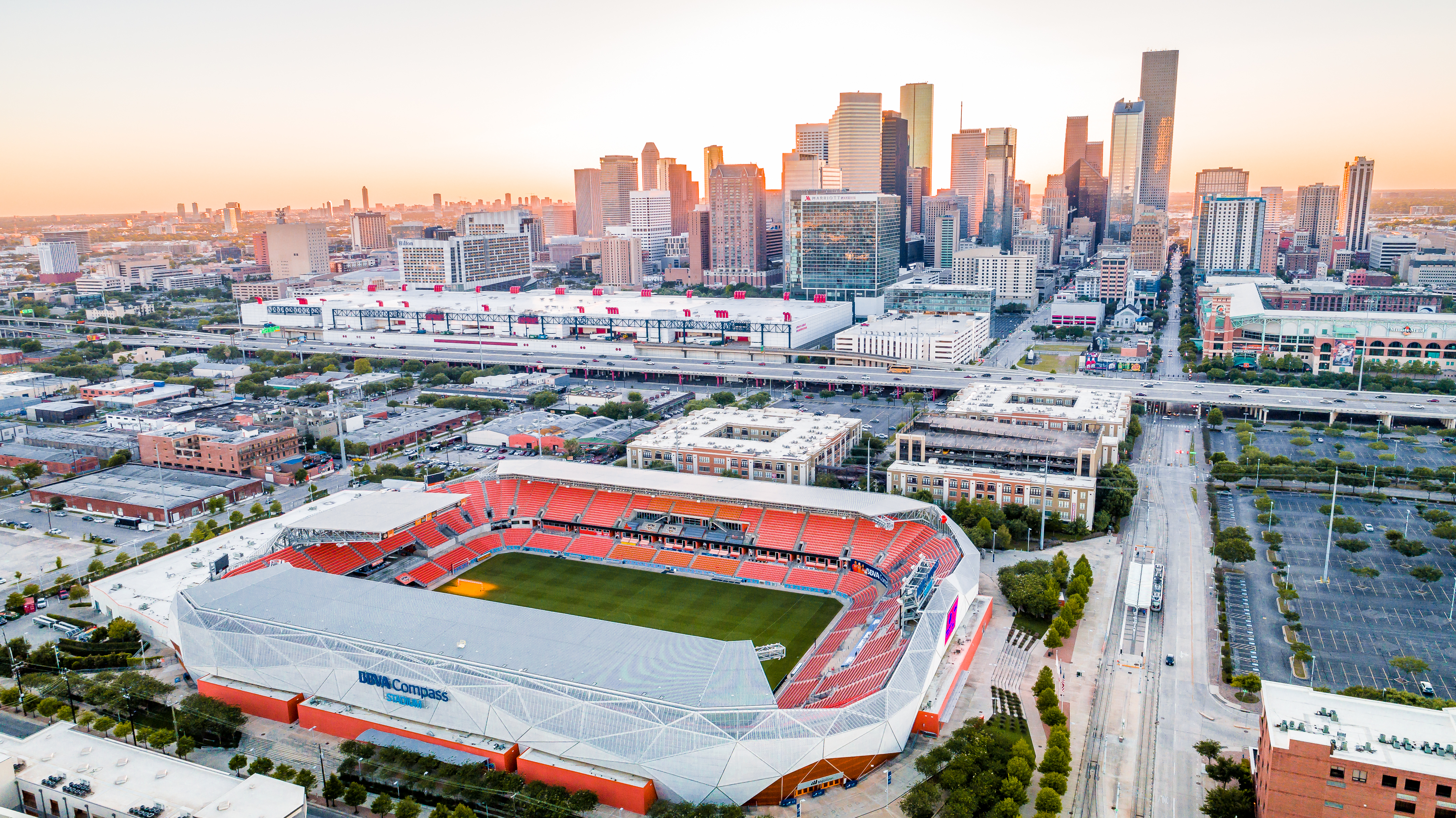The COVID-19 Effect on Houston: 12 Economic Indicators
Published Mar 27, 2020 by Patrick Jankowski
Houstonians are bombarded by daily reports about the coronavirus pandemic, plummeting energy prices and both pulling the economy into recession. The Partnership has selected 12 key indicators and placed them in a context that readers without advanced knowledge of statistics can understand. That analysis follows.
$21.7 trillion - Value of U.S. gross domestic product (GDP) in ’19
With the nation focused on the pandemic, scant attention was paid to this bit of good news. The U.S. Bureau of Economic Analysis reported that GDP grew at a 2.1% annual rate in Q4/19. The economy grew 3.0% in Q1, 2.0% in Q2 and 2.1% in Q3. Over the past three years the U.S. economy had grown by $1.9 trillion.
12% - Expected decline in U.S. GDP in Q2 according to Bank of America
Goldman Sachs expects a 24% drop, JP Morgan Chase 25%, Morgan Stanley 30%.
As the Wall Street Journal notes, those estimates contain a lot of guesswork since there is no comprehensive economic data on what has happened so far, much less what is about to happen. Most economists expect the economy to bounce back in Q3, but not enough to offset all the losses of Q2. Goldman forecasts third-quarter growth of 12%, Morgan Stanley of 29%. For more on GDP forecasts as a result of the virus, click here.
$2.2 trillion - Value of the stimulus bill passed by the U.S. Senate and set for a House vote on Friday
Epidemiologists have urged the U.S. to consider itself at war with the coronavirus. To extend that metaphor, the U.S. spent $4.1 trillion (adjusted for inflation) on World War II. For a deeper dive on what’s included in this stimulus package, click here.
83,836 - The number of confirmed COVID-19 cases in the U.S. as of 8 p.m. March 26
That exceeds the population of Liberty County (88,219) one of the eight counties of the Houston metro area. The number of confirmed cases nearly matches metro Houston’s population growth (89,994) last year. A bit more sobering, the number of confirmed cases in the U.S. has increased six fold since March 19 (13,677 cases) and now the U.S. leads the world in confirmed cases.
2,054 – The difference between the number of cases in the U.S. and those in China
U.S. infections now exceed those of China (81,782) and Italy (80,589). And while China’s count appears to have stabilized, the U.S. rate continues to climb. Nearly half the U.S. cases (39,125) are in New York State. There are 1,621 cases in Texas, a seven-fold increase since March 19 (260 cases).
1,209 - Number of deaths in the U.S. due to the virus (as of March 26)
That’s a six-fold increase since March 19.
3,283,000 - Initial claims filed for unemployment insurance in the U.S. the week ending March 21
That’s the highest level of initial claims in the history of the series. The previous record was 695,000 in October of ’82. That also represents an increase of 3 million claims over the previous week.
155,657 - Initial claims filed in Texas the seven days ending March 21
That’s up from 16,176 initial claims from the prior week. The nine-fold increase indicates a surge in layoffs occurred in mid-March. The number of shelter-in-place and stay-home-work-safe orders has grown since, so initial claims (and the number of unemployed) will continue to rise. For an historic perspective, the week immediately after Hurricane Harvey initial claims in Texas topped 63,788.
30% – Possible U.S. unemployment rate in Q2/20
James Bullard, President of the Federal Reserve Bank of St. Louis, made headlines when he suggested the pandemic might drive the unemployment rate that high if Congress fails to pass an aggressive aid package. A 30% rate equates to 50 million Americans out of work by summer, a nearly eight-fold increase from January’s 4.0% rate and 6.5 million unemployed.
4.1% - Houston’s unemployment rate in January ’20
The Partnership doesn’t forecast unemployment rates, but one might apply a rule of thumb—for every 100,000 jobs lost the rate goes up around 2.9 percentage points. This assumes there’s no change in the size of the labor force. If Houston sinks into a prolonged recession, Houstonians may become discouraged and drop out of the labor force and thus would not be counted among the unemployed.
$23.08 - The closing price for West Texas Intermediate sold on the spot market March 26
That’s a slight improvement from March 18 when WTI closed at $20.37 but well below $63.05 on January 2 of this year. We looked at this in some detail in the last edition of Economy at a Glance.
$50 - The average breakeven price for crude produced in North America
The U.S. Energy information Administration forecasts crude to average $38.19 this year, well below breakeven costs. In a recent survey of energy firms by the Federal Reserve Bank of Dallas, over 70% respondents said they will significantly cut capital spending this year. The Reuters news agency found cuts averaged 30% or more among the firms it surveyed.
Visit the Partnership's COVID-19 Resource page for updates, guidance for employers and more information. And sign up for daily email alerts from the Partnership as the situation develops.
 The Houston Report
The Houston Report




















